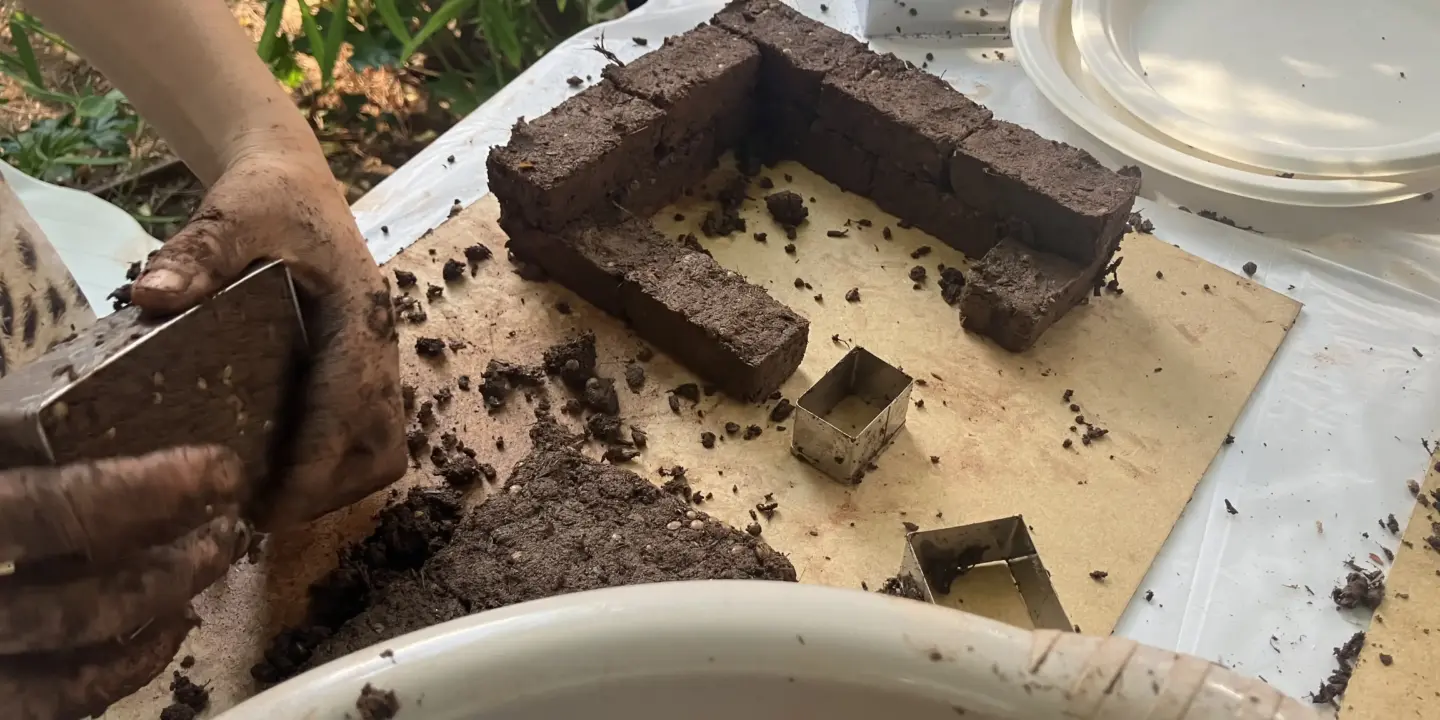On Saturday, 18 of October, the first workshop in the Architecture and Nature Cycle was held in the garden of Can Prunera, led by architect and workshop leader Pablo Amor. This Cycle, which organically combines architecture, play, environment, knowledge and learning, brought together several families with their children, who were able to enjoy a unique and multidisciplinary experience. First, there was a brief and interesting theoretical introduction to the book that inspired the workshop: Fitópolis, by Stefano Mancuso (Galaxia Gutenberg). Based on Mancuso’s work, attendees learned about the life and work of the protagonist of this first workshop: Masanobu Fukuoka, a Japanese farmer, biologist and philosopher.
His revolutionary method, called Nendo Dango, or clay ball in Japanese, is a reforestation technique developed by Fukuoka by mixing seeds, clay, soil and water to form balls full of vegetal possibilities with which to bring life to vacant or vegetation-free land. This simple philosophy of caring for the earth was embraced by several architects, who saw in it a wonderful opportunity to shape the future of our cities, making them greener, more environmentally friendly and providing them with tree-lined areas to mitigate the systematic rise of temperatures.
The children and their parents immediately put into practice the theory skillfully explained by Pablo Amor at the working tables set up in the garden. Using a fun mix of natural elements, the children created a living mass where the first bombs appeared, which they squeezed in laughter. Then came the moment of truth. Using geometric molds, they created small blocks and bricks filled with seeds to build their small cities, towns, mountains, and even a kind of funeral vessel very similar to those found in Menorca. In a few days, thanks to the natural collaboration of the elements, their creations will germinate and bloom.
In the next workshop, we will explore how triangles are the strongest shape in nature. Children and their companions will become builders for a day, using rods and knots to build a giant dome together, understanding the secret of its lightness and strength. To do this, we will draw inspiration from American architect Richard B. Fuller and his method of doing more with less, optimizing the material used to make the world a more sustainable and efficient place.
